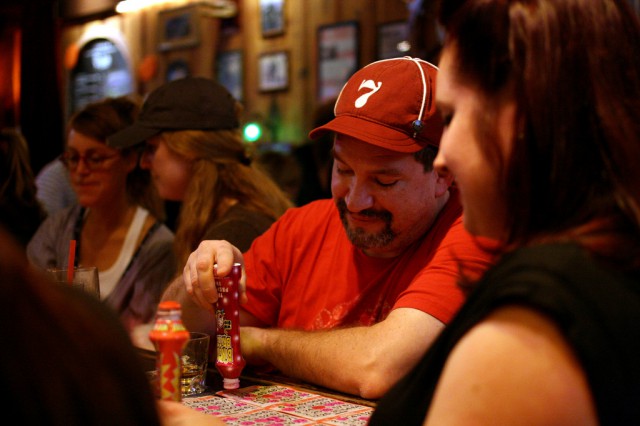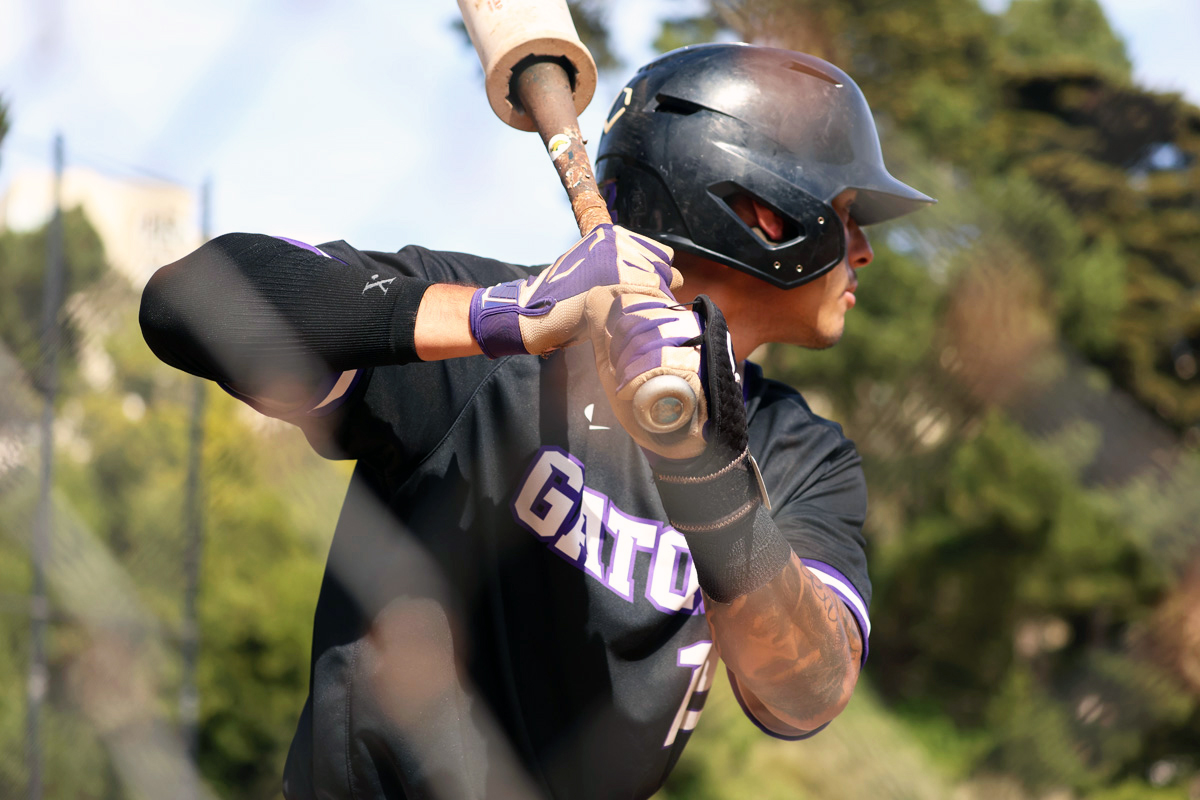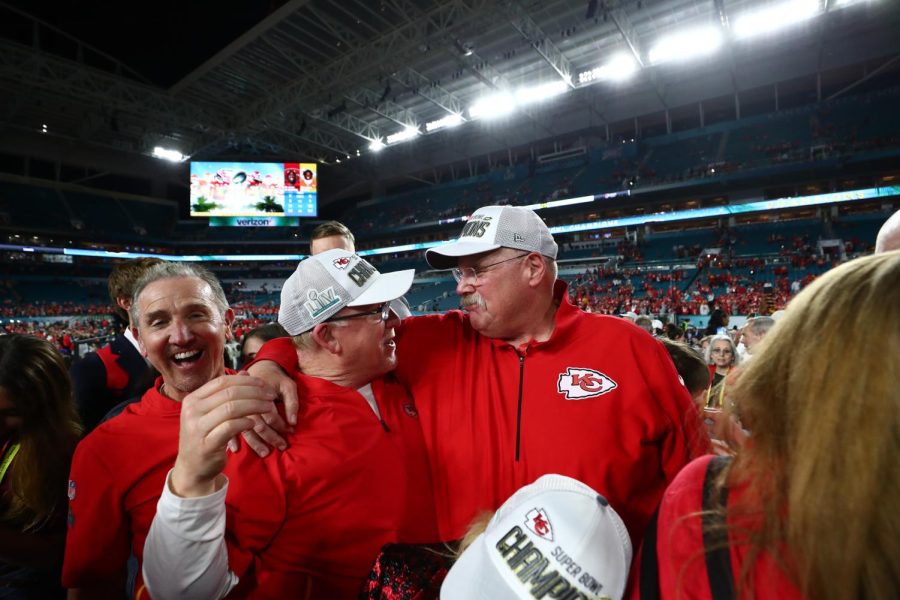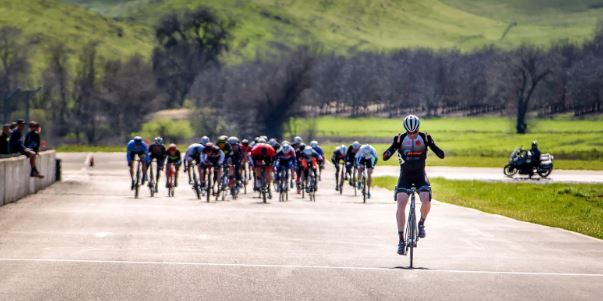
Written by Jake Montero
Photos by Benjamin Kamps
The destruction of Candlestick Park will mark the end of its more than fifty years as a professional sports forum. It will signal the end of professional football in San Francisco, a tradition of forty-two years that has spawned five Super Bowl champions.
San Francisco’s original waterfront stadium was once seen as a model of modern engineering. Opened on April 12, 1960 Candlestick Park has gradually drifted to the other end of the spectrum, now considered obsolete both as a sports venue and an aesthetically pleasing attraction. In early 2014, after the 49ers complete their season, their longtime home will be stuffed full of dynamite and quickly imploded into a pile of rubble, making way for the new Hunters Point Shipyard redevelopment project.
The 49ers future home, Levi’s Stadium, is currently being constructed in the South Bay city of Santa Clara, with building costs totaling about $1.2 billion. The 49ers will be the second team to leave Candlestick for new digs, the San Francisco Giants being the first with their departure to then Pacific Bell Park in 1999.
Despite complaints about the stadium’s swirling winds, lack of general aesthetic value and hilariously disgusting trough style urinals, Candlestick’s unique character has set it apart from its contemporaries. Character that will be sorely missed by those who have shared wonderful experiences within its decaying exterior.
“It’s very melancholy for me, I’m probably gonna tear up for that last game” says Cooper Reynolds, a former 49ers season ticket holder. “I’ve been a fan for as long as I can remember and I’ve never missed a game there. It’s a pain in the ass to get to, it’s run down and it’s old. But it has character and history and great moments that are second to none. That’s something you can’t build.”
For those who have followed the franchise over the years, there is nearly unanimous agreement that the legendary touchdown pass to Dwight Clark in the 1981 NFC Championship game is one of the quintessential events in the stadium’s history, and in the history of the 49er franchise.
With the Niners down six points in the game’s closing moments, a third-year quarterback named Joe Montana marched his team down the field eighty-three yards only to stall on the Dallas Cowboy’s six-yard line. On the next play, Montana rolled to his right under heavy pressure from three Cowboy defenders. Off his back foot, Montana floated the ball over the outstretched arms of six-foot nine-inch Dallas defensive end Ed “Too Tall” Jones, in what many assumed was an act of desperation. Miraculously, the fingertips of Montana’s rookie year roommate, a fully stretched wide receiver Dwight Clark, brought the pigskin back to Earth, and sent the 49ers to their first Super Bowl in franchise history.
In addition to becoming an iconic image, “The Catch” is seen as the beginning of the 49ers 1980s dynasty and the first in a series of memorable playoff games against the Cowboys.
“You probably have to go with the ‘81 Championship game”, says Reynolds when asked about the greatest moment in the stadium’s history. “Before that play, those guys on the field weren’t the Niners as we know them now. They’d never been to a Super Bowl. The play has actually become overrated, but it was their up and coming moment and is certainly remembered most.”
The Cowboys could’ve actually won the game just seconds later. When Dallas got the ball back with less than a minute to go, the Niners blew coverage and allowed all-pro wide receiver Drew Pearson to catch a pass over the middle with room to run. A game saving grab of Pearson’s collar by Niners defensive back Eric Wright bailed out the 49ers and squandered any attempt to soil the legacy of Dwight Clark’s now infamous touchdown catch.
“That play literally built the 49ers franchise. It was a monumental upset,” says Chace Bryson, 35, a season ticket holder who’s been to about seventy games at Candlestick.
The Catch might be the most iconic moment in the stadiums history, but certainly wasn’t the last time the 49ers would score a go-ahead touchdown at the end of an important playoff game.
The 2011 Divisional Playoff against the New Orleans Saints was the first postseason game to be hosted at Candlestick in nine years. In the final minute, the 49ers drove sixty-one yards to the New Orleans fourteen-yard line. With nine seconds left, quarterback Alex Smith capped off arguably the best performance of his career at Candlestick, by fearlessly firing a bullet to the back shoulder of well covered tight end Vernon Davis. Davis, who had suffered for five years on sub-par Niners teams, made the catch and held on for dear life, emerging from the pile with his first career playoff victory and tears of joy running down his face. The touchdown sent the 49ers to their first NFC Championship in fifteen years.
“I was sitting in the upper reserve, in the corner of the end zone facing the Jumbotron,” Bryson says. “Smith makes the throw to Davis. I can only describe the feeling as euphoric. I’ve never heard Candlestick so loud…it was epic. There were plenty of hugs and definitely some tears. As far as a stadium experience goes, it doesn’t get better than that.”
Ironically, a stadium that will be most remembered for legendary football moments, is the only current NFL stadium originally built for baseball. Though it seems like ancient history now, Candlestick was also the home of the world champion San Francisco Giants for nearly four decades. After the 49ers arrival in 1971, the attempt to convert the stadium into a multi-purpose facility wasn’t without its flaws, leading to many obscured sight lines and left entire sections of seats virtually unusable due to lack of visibility. San Francisco resident Bjorn Griepenburg has been to upwards of sixty games at Candlestick, the vast majority of those Giants games as a young boy with his father.
“The first time I saw it, it was the first time I ever went to a pro stadium and as a kid it was a spectacular sight,” says Griepenburg. “I remember I just couldn’t believe the size and the number of people.”
Griepenburg misses Candlestick as the Giants’ home because its lack of extracurricular stadium activities ensured that everyone who made the trek was there to support the team. He feels that the move to an expensive and polished new stadium alienated some longtime supporters, and that new technological distractions create an atmosphere and a fanbase that is no longer hanging on every play.
“My biggest complaint when they moved was they were moving to a park not built around baseball. It was all about the Coke slide and the giant mitt,” says Griepenburg referring to the Giants current home at AT&T Park. “Even as a kid I refused to ride that thing because I thought it was a stupid distraction. When they left Candlestick it wasn’t the same diehards. Now it’s a wine and sushi crowd on their cell phones networking.”
Many have complained for years about Candlestick’s obsolete facilities, cramped hallways, lack of women’s restrooms, its “middle-of-nowhere” location, and lack of state-of-the-art technology (have you seen the “Jumbotron”?). However, that doesn’t stop longtime visitors from feeling more bitter than sweet about the execution of a football cathedral.
“I’ll remember it as a place of happiness, great memories, even in the bad years,” says Bryson. “Something about football is it’s okay to have a cramped stadium. There’s some charm in having the leagues most outdated stadium. It’s part of a collective experience where you suffer along with the players. Fans go for the experience, to pack in with your buddies and everybody is pulling in the same direction. The new stadium feels a little too much like corporate NFL.”
After the 49ers were unable agree with the city of San Francisco on a deal for a new park within the city limits, the move to an alternate location became inevitable. The new venue in Santa Clara will be the most technologically advanced stadium in NFL history, with an unprecedented Wi-Fi network that will allegedly support access from every fan simultaneously and downloadable apps that tell you which beer line is the shortest. Unfortunately, the astronomical cost of tickets and distance from the city is going to stop some fans from attending.
“A lot of people including me are being priced out,” Bryson says. “Season tickets would be double and I’d be driving much farther so there would be much more money involved. I understand it, but I wish there was a way to keep them closer.”
“Candlestick has that special place in the hearts of the fans,” Griepenburg concludes. “It rises out of a parking lot in one of the worst neighborhoods, it’s architecturally awful and an eyesore. But a stadium can become so much more than a place to watch sports. Stadiums are like church to a lot of people. It’s one of the last places where you can go where everybody is pulling for the same thing. It’s just an extraordinary place.”
With the 49ers looking like one of the best teams in the NFC, there is always the possibility for a historical farewell Super Bowl run that would no doubt be a perfect send off. Regardless, it would be in the cities best interest to give the stadium some sort of farewell aside from the climactic dynamite spectacle.
“I think they should have one more Giants vs. Dodgers series before destroying it,” Griepenburg says. “That would be perfect.”










